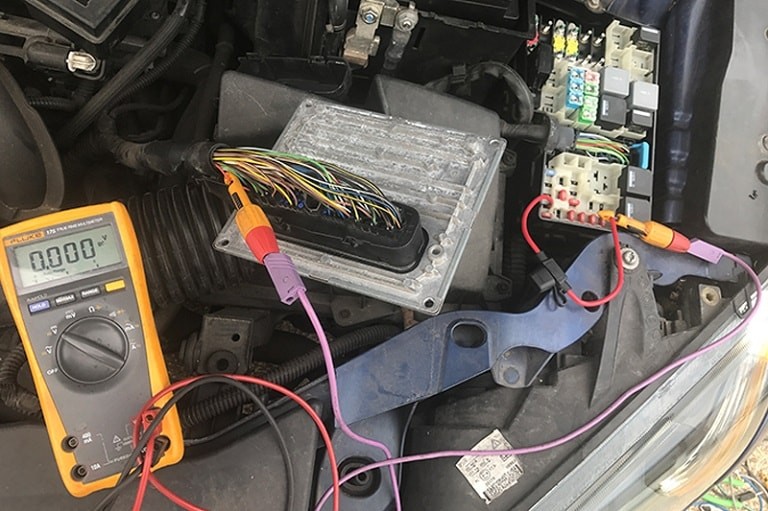The Ford Diagnostic Trouble Code (DTC) U1900-20 indicates a communication fault within the vehicle’s network, often related to the instrument cluster. This code can manifest in various ways, from a simple warning light to a complete failure to start. This article delves into the U1900-20 code, its common causes, and diagnostic steps for resolution.
Common Causes of Ford DTC U1900-20
The U1900-20 code frequently points to a problem within the instrument cluster itself or its communication with other modules. Here are some of the most common culprits:
- Faulty Instrument Cluster: Internal component failure within the instrument cluster, such as damaged solder joints, cracked circuit boards, or malfunctioning processors, can disrupt communication and trigger the U1900-20 code.
- Wiring Issues: Damaged or corroded wiring harnesses connecting the instrument cluster to the vehicle’s network can interrupt signal transmission, leading to the U1900-20 code. This can include issues with the CAN bus network.
- Loose Connections: Poor connections at the instrument cluster connector or other related connectors can cause intermittent communication problems and trigger the code.
- Low Battery Voltage: In some cases, a significantly low battery voltage can disrupt the proper functioning of the instrument cluster and lead to the U1900-20 code.
- ECU Malfunction: While less common, a malfunctioning Engine Control Unit (ECU) or other related modules can contribute to communication issues and the U1900-20 code.
Diagnosing Ford DTC U1900-20
Resolving the U1900-20 code requires a systematic diagnostic approach:
- Visual Inspection: Begin by visually inspecting the instrument cluster connector and associated wiring for any obvious damage, corrosion, or loose connections.
- Code Reading: Use a diagnostic scanner to confirm the U1900-20 code and check for any other related codes that might provide further clues.
- Battery Voltage Check: Ensure the battery voltage is within the specified range. A low battery can cause erratic behavior and trigger various codes.
- Wiring Harness Test: Use a multimeter to test the continuity and resistance of the wiring harness connected to the instrument cluster, focusing on the CAN bus lines.
- Instrument Cluster Testing: If wiring and connections check out, the instrument cluster itself may need to be tested using specialized diagnostic equipment. This may involve checking communication signals and internal component functionality.
- ECU Communication Test: Verify communication between the instrument cluster and the ECU using a diagnostic scanner. This will help determine if the issue lies within the instrument cluster or a related module.
Using a multimeter to check for voltage at the ECU.
Inspecting fuse box pins for damage or corrosion.
Solutions for Ford DTC U1900-20
Based on the diagnosis, the solution may involve:
- Repairing or Replacing the Instrument Cluster: If the instrument cluster is found to be faulty, it may be repaired by addressing damaged solder joints or other internal components. In some cases, replacement may be necessary.
- Wiring Repair or Replacement: Damaged or corroded wiring harnesses will need to be repaired or replaced to restore proper communication.
- Connector Repair or Replacement: Damaged or corroded connectors should be cleaned or replaced to ensure a secure connection.
- Addressing Low Battery Voltage: Charge or replace the battery if the voltage is significantly low.
- ECU Repair or Replacement: If the ECU is determined to be faulty, it may need to be repaired or replaced.
Conclusion
The Ford Dtc U1900-20 can be a complex issue requiring a thorough diagnostic process. By systematically checking wiring, connections, the instrument cluster, and related modules, the root cause can be identified and resolved, restoring proper vehicle functionality. Remember to consult with a qualified automotive technician for assistance if needed. Accurate diagnosis is crucial to avoid unnecessary part replacements.
